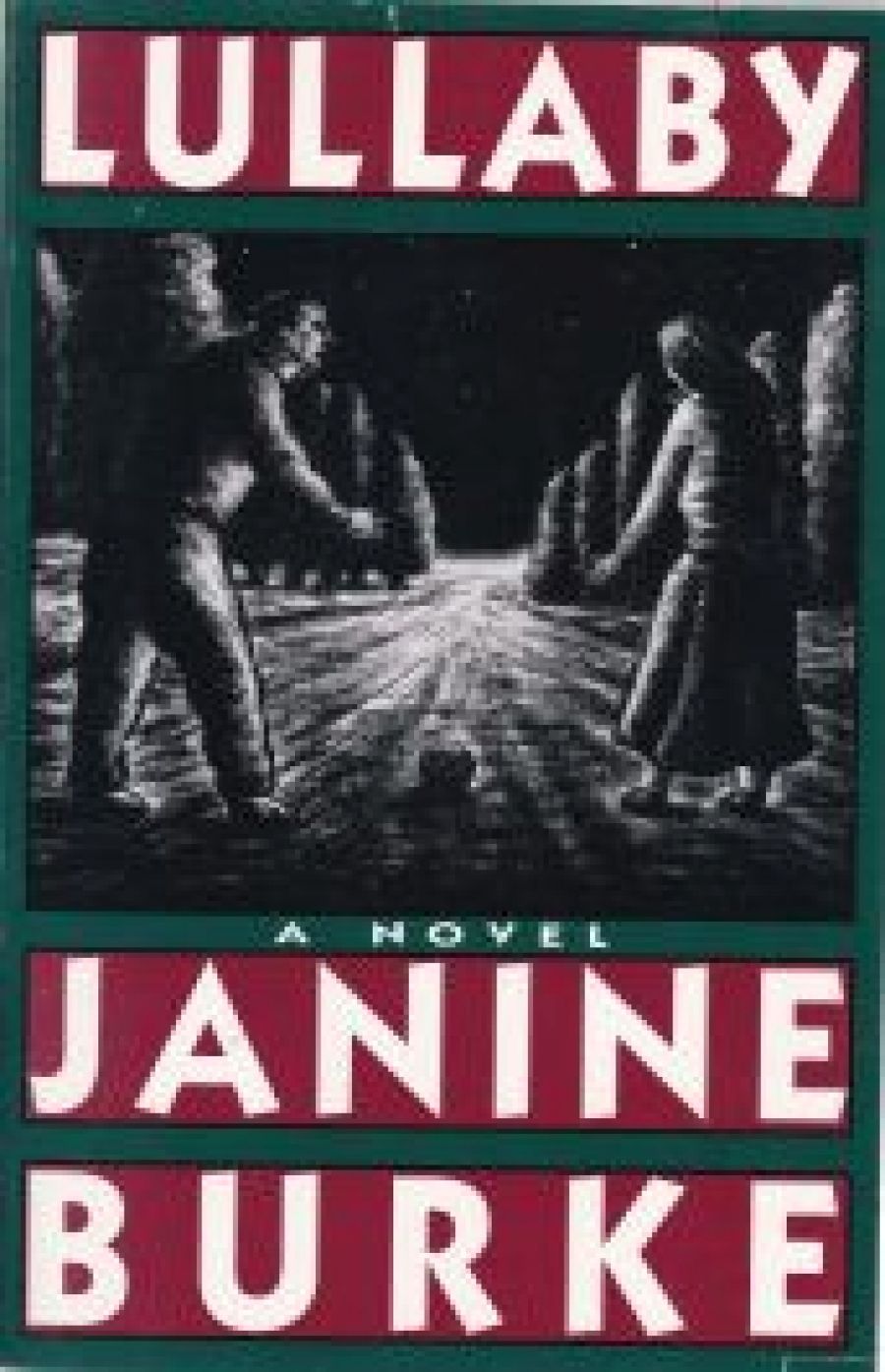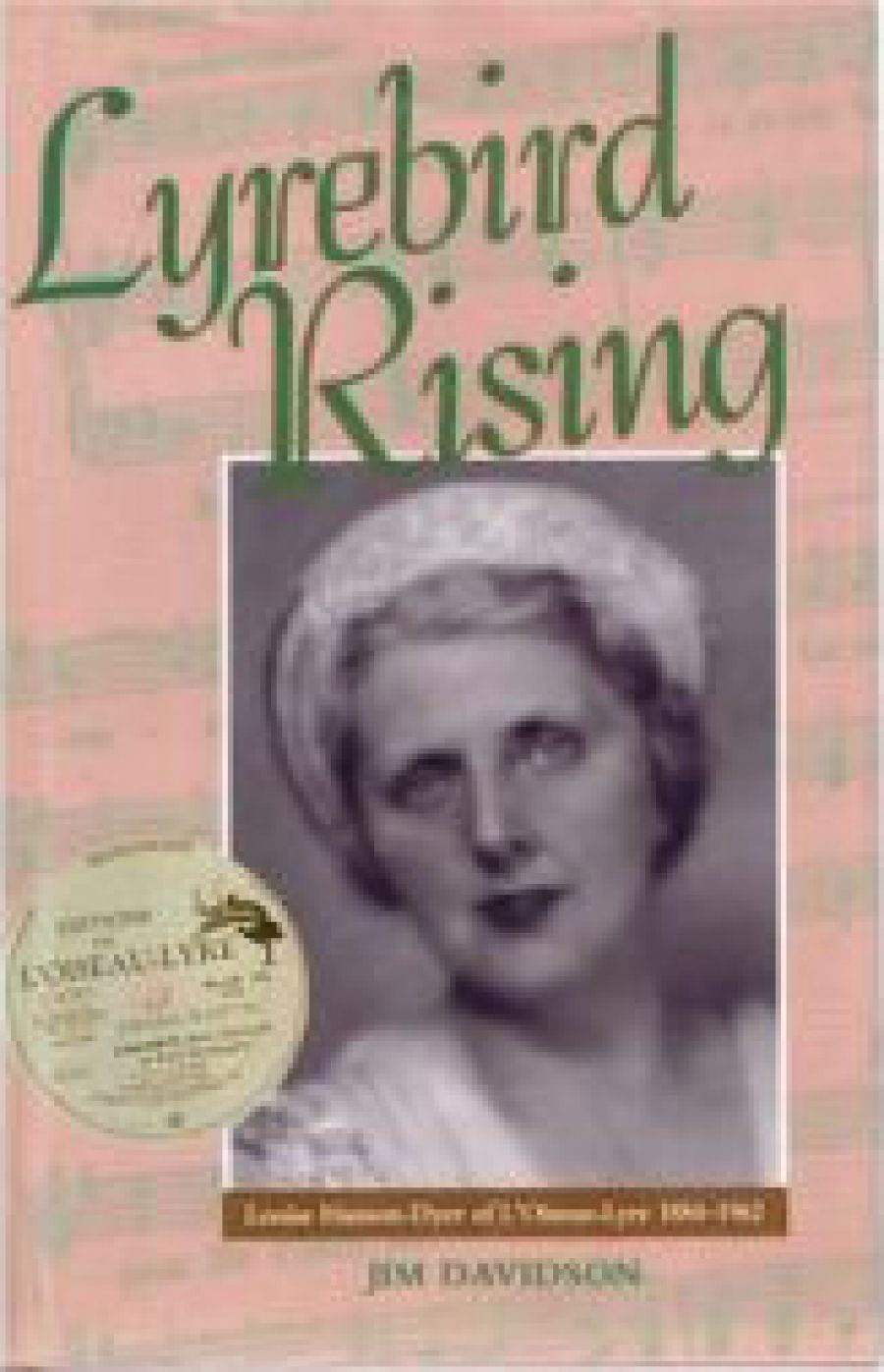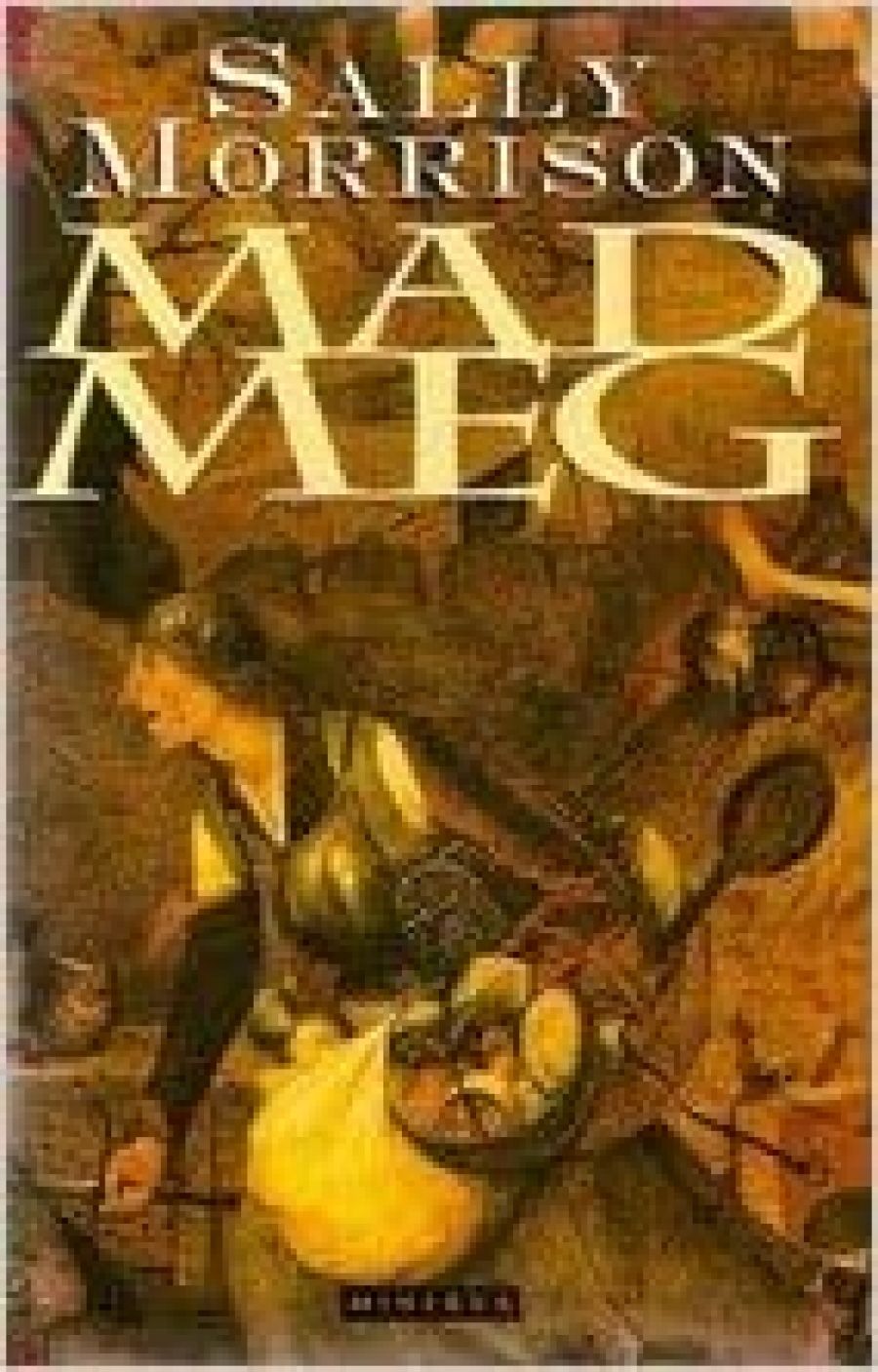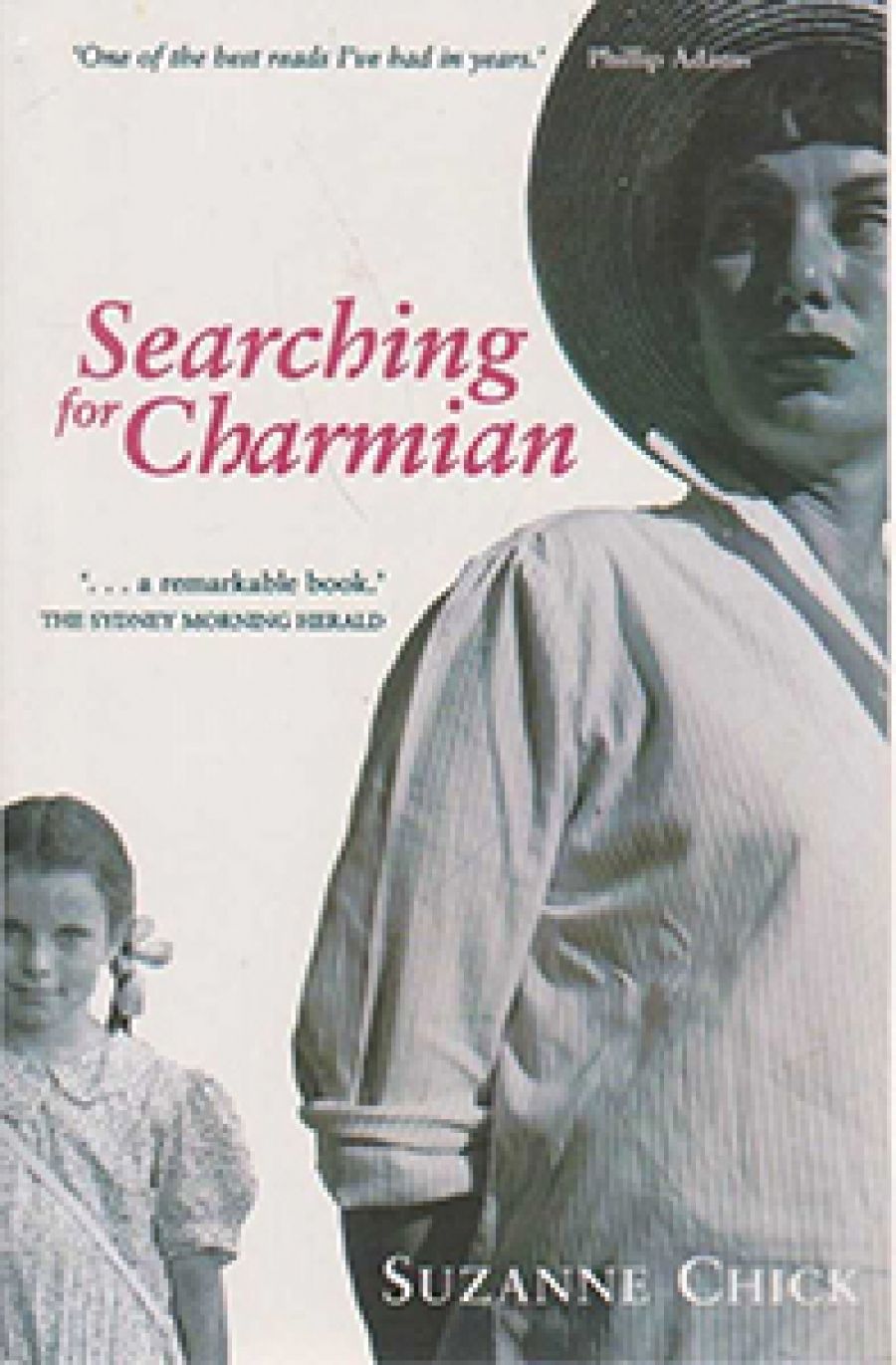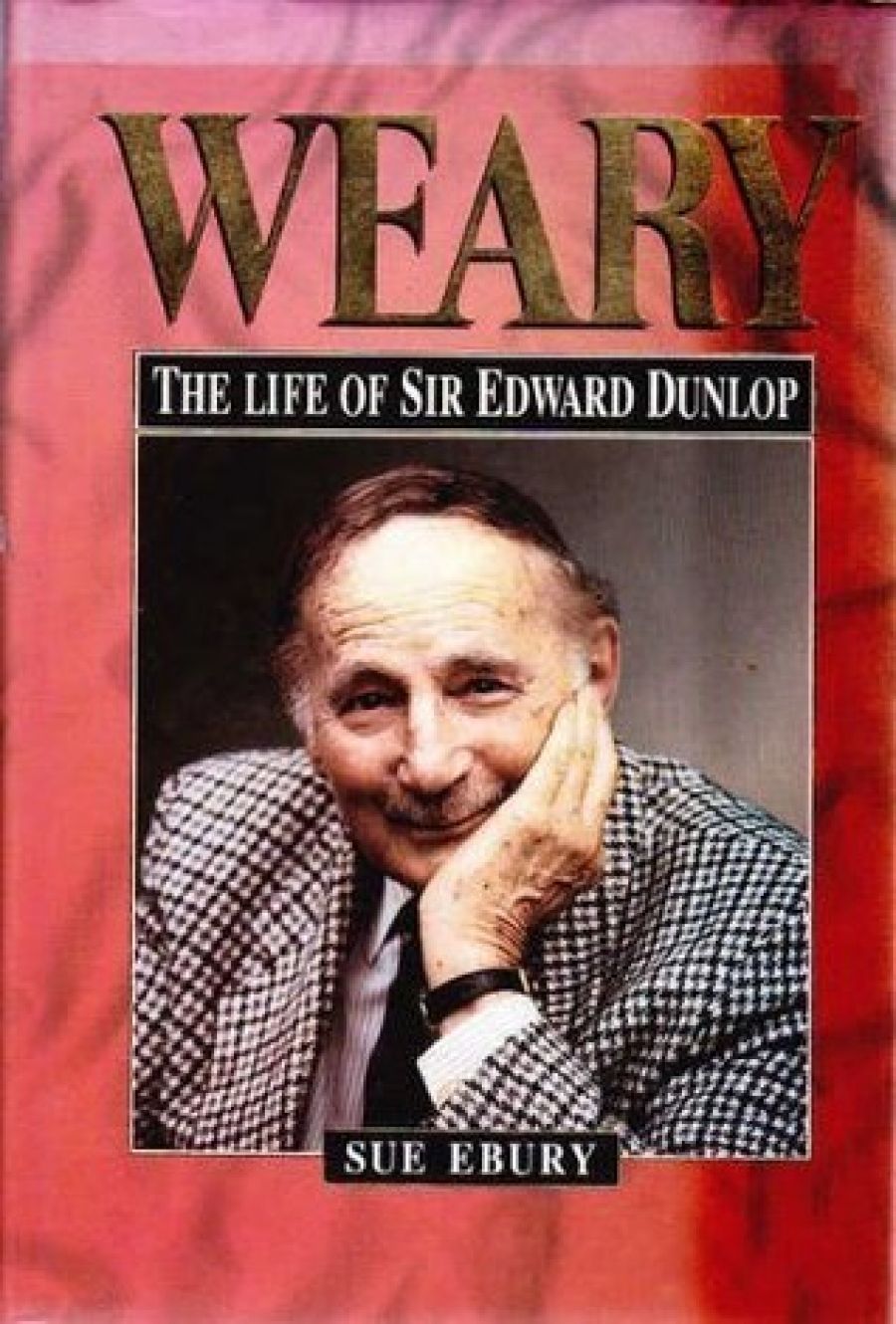
- Free Article: No
- Contents Category: Biography
- Review Article: Yes
- Online Only: No
- Custom Highlight Text:
Over 35,000 copies of the hardback edition of Edward ‘Weary’ Dunlop’s war diaries had been sold before they were reissued in paperback. Now Sue Ebury, who edited those diaries for publication, has written an accompanying ‘Life’. An impish picture of the older Weary in a sportscoat looking rather smaller than he really was grins beneath his name written in gold on a red silk background. In the paper edition it will surely be embossed.
- Book 1 Title: Weary
- Book 1 Subtitle: The Life of Sir Edward Dunlop
- Book 1 Biblio: Penguin, $45 hb
Over 35,000 copies of the hardback edition of Edward ‘Weary’ Dunlop’s war diaries had been sold before they were reissued in paperback. Now Sue Ebury, who edited those diaries for publication, has written an accompanying ‘Life’. An impish picture of the older Weary in a sportscoat looking rather smaller than he really was grins beneath his name written in gold on a red silk background. In the paper edition it will surely be embossed.
This book is very long, as is often the way with modern biographies, and it needs a strong pair of wrists, but unlike many modem books the typeface is a decent size for the older reader. Much of it was written before Dunlop’ s death in 1993 and with his assistance, so it has some of the qualities of an autobiography. Sue Ebury had access to Dunlop’s papers and other correspondence which is still in private collections and she was able to interview many of his friends and associates.
Read more: Beverley Kingston reviews 'Weary: The Life of Sir Edward Dunlop' by Sue Ebury
Write comment (0 Comments)

